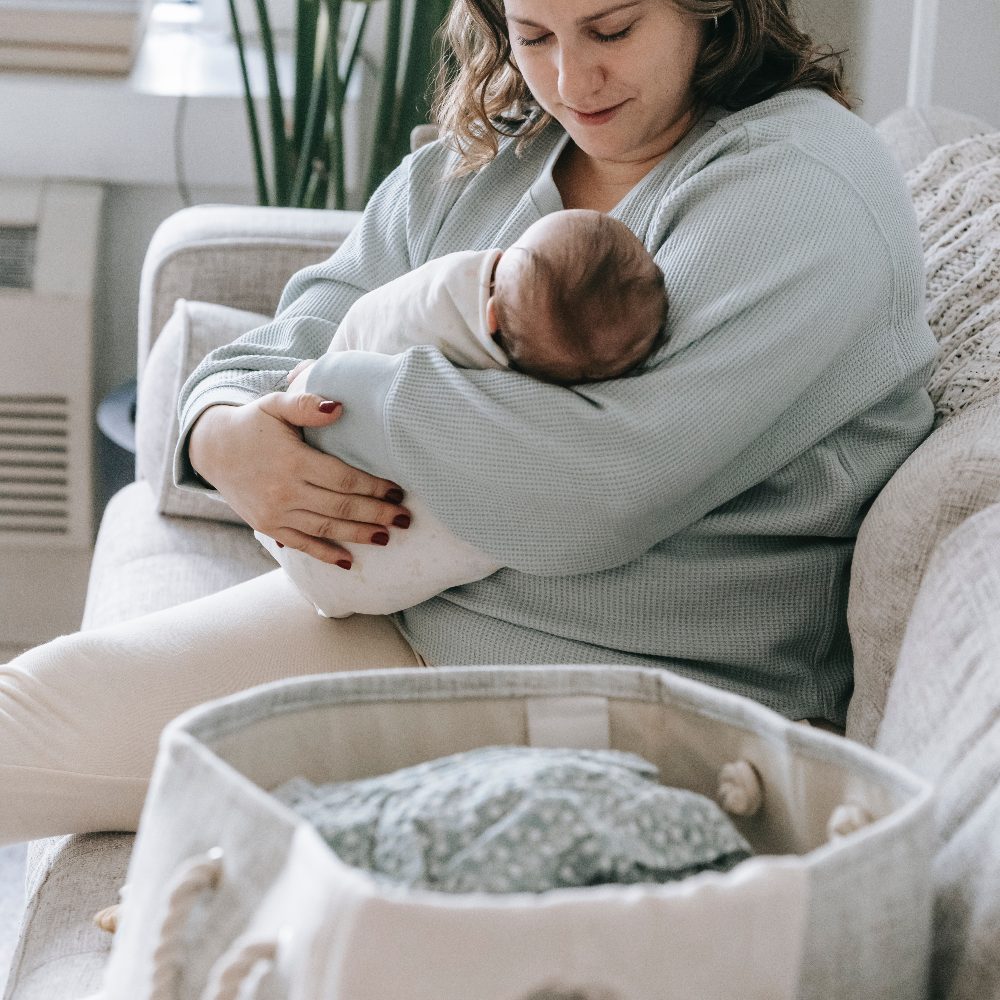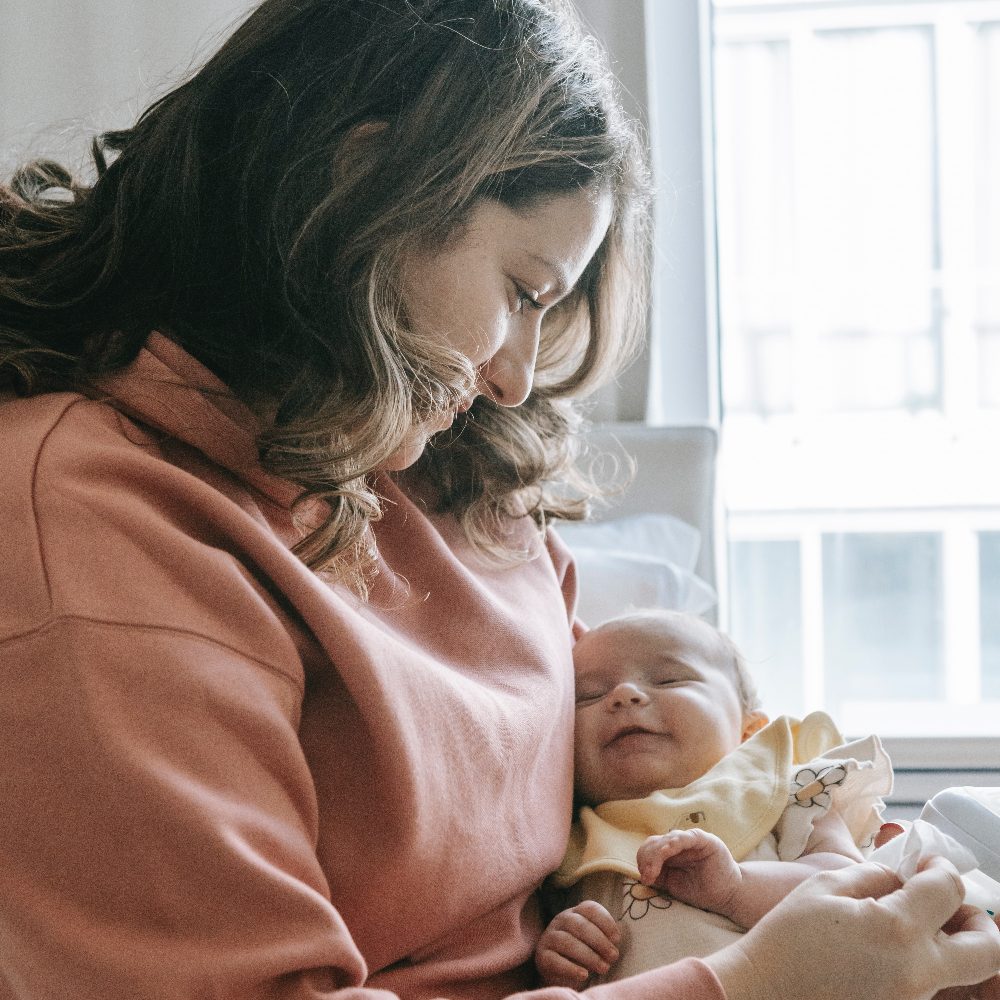
Is there a more romantic activity than rocking your newborn to sleep and giving them a cuddle or two? In the early weeks or months of your relationship, rocking your infant to sleep might feel wonderful. However, your baby will gain weight and grow in size. When you rocked your baby to sleep, they may have formerly slept soundly, but today they wake up soon after being placed in the crib. Even now, your little child may still require rocking to fall asleep.
However, many parents have extreme trepidation about when to stop rocking a baby to sleep. Draw a long breath. You don’t have to rock your child to sleep for them to fall asleep. Let’s take a look at how to wean your kid off of the rocking to sleep habit.
What Justifies Rocking Babies To Sleep?

Let’s discuss why newborns need to be rocked to sleep before we discuss when to stop rocking a baby to sleep.
Probably when they were a newborn, you started rocking your kid to sleep. Newborns respond very well to rocking. They relive that womb-like experience thanks to it. Your unborn child was peacefully moving about in the womb. Your infant would feel a soft rocking motion every time you moved.
So it was comforting for your baby to feel that rocking motion when they first arrived in the world. Knowing how to soothe a distressed baby is useful. You probably discovered that rocking your baby to sleep or to ease them into a nap helped to calm and relax them. And that aided in their preparation for sleep.
When To Stop Rocking A Baby To Sleep

The past few months or even years may have seen the development of this habit. It can be tiresome if your baby has reached the point where she will only be rocked to sleep and won’t sleep on her own. You might need a lot of time to rock them to sleep.
Or perhaps you discover that your infant needs to be rocked back to sleep because he or she is waking up frequently during the night.
Your child’s difficulty falling asleep without being rocked to sleep is a result of their development of the association that they must receive this rocking motion from you in order to fall asleep. In other words, they have created an association between rocking and sleeping, or what I refer to as a “sleep association” in the field of sleep coaching.
When a baby forms the association that you rock them to sleep, they become dependent on you to put them to sleep. They lack the capacity to soothe themselves.
Rocking The Infant To Sleep Before Naps And Bed
Your infant will likely wake up several times during the night. Or perhaps your infant just naps for a short time. Additionally, you could discover that they require your presence to rock them back to sleep when they wake up at night or after a 30-minute nap.
Your child isn’t in the same place that they were when they went to sleep, which is why you’re noticing those night awakenings and brief naps.
Think about it from their viewpoint. They felt secure and warm in your arms as they dozed off. When they closed their eyes and dozed off into a baby dream world, they felt the gentle rocking motion. After carefully placing them in their crib or bed, you quietly left the room.
Is It Essential To Swaddle A Newborn?
After they complete the deep, restorative part of their sleep cycle, they briefly wake up and take in their surroundings.
They become irate at that point. They’re exhausted. But you’re no longer rocking them when they’re in your arms. The location where they were when they fell asleep has completely changed. And they’re no longer experiencing the gentle swaying.
What then do they do? Because they haven’t mastered the ability to fall asleep again on their own without being rocked to sleep, they start to scream out for you to come and assist them.
Continue To Rock The Toddler To Sleep
Not only babies, but all people, require rocking to fall asleep. I’ve worked with a lot of parents whose toddlers still require rocking to sleep.
And it does get harder as your child gets older. Compared to a 2-month-old, a 2-year-old is significantly heavier and wigglier.
However, the good news is that you can wean both infants and toddlers off of need rocking to fall asleep!
When Not To Rock A Baby To Sleep
There isn’t a set age at which you must no longer rock your child to sleep. When it is no longer beneficial for your family, it is time to quit the rocking to sleep practice. Several questions to ponder include:
Do you dread bedtime every night because you never know when your child will fall asleep?
Is it becoming uncomfortable to rock your child to sleep?
Because your infant needs to be rocked to sleep, are you experiencing any physical pain in your back or arms?
Because they wake up in the middle of the night and need to be rocked back to sleep, your baby may not be receiving enough sleep.
Does your child take short naps—those lasting no more than an hour and a half?
Have you been saying to yourself, “I can’t rock the baby to sleep anymore”?
Have you ever found yourself unconscious while holding your child? Be confident because many of us have experienced this. Your infant is resting in a highly hazardous situation right now.
Do you find it exhausting to rock your little child to sleep?
If you said “yes” to any of these seven inquiries, then rocking your child to sleep is no longer a viable option for you or your child. Now is the time to teach your child self-soothing skills so they can stop requiring rocking to fall asleep.
Once they are about 15 weeks old, infants can soothe themselves. Therefore, NOW is the ideal time to stop rocking your baby to sleep if he or she is older than 15 weeks old.
I want you to stop worrying about missing out on your child’s special bonding time during the bedtime routine.
Before they fall asleep, you can still spend some quality time cuddling with them in the bedtime routine. Let’s discuss how to accomplish that while weaning the child from being rocked to sleep.
First Step In Weaning A Rocking Infant To Sleep
Setting up a bedtime routine that still allows for plenty of cuddles is the first step in weaning your infant or toddler from being rocked to sleep.
A bath can be the first step in your child’s nighttime routine. After that, you can help them change into their jammies. Additionally, if you have a baby, dress them in an arms-free sleep sack.
If your child is younger than a year old, now is the ideal time to give them their final feeding of the day. It’s a terrific opportunity to cuddle up and become close to your infant now. If your infant or toddler is older than a year, you can skip this stage.
The next step is to get a book or two out and read to your kid. You should always try to spark your child’s interest in reading. And the bedtime ritual presents yet another wonderful opportunity for intimacy, cuddles, and touch. But limit yourself to just two novels. You don’t want your youngster to become overtired or drowsy by letting the bedtime process stretch on.
Check out my two favorites for kids of any age if you’re seeking wonderful books to read before bed:
Goodnight Moon by Margaret Wise Brown with Nancy Tillman’s Wherever You Are My Love Will Find You
Though read a variety of novels. Provide some diversity so they can start broadening their perspectives.
Once your child is asleep in their crib or bed, you can say goodnight to them.
You’ll see that while there are cuddle opportunities during the bedtime routine, there is no longer a step for rocking the baby. As an alternative, you will put them down in their crib awake now rather than reading books to them and saying good night.
How To Stop A Baby From Wanting To Be Rocked To Sleep
Yikes! Have my words just now caused your heart to skip a beat? You’ll put your infant or toddler down into their crib while they are still awake, did I just say that? Yes, I did say exactly that.
Your child needs to learn how to go to sleep on their own without your help or being rocked. Additionally, it is your responsibility as their parent to give them the love and encouragement they need as they develop the abilities necessary to fall asleep on their own.
If you were to teach your child to ride a bike in a few years, what would you do? Take a moment to consider your plan of action.
They require assistance mastering the skill of riding a bike before they can do it entirely on their own.
Is it necessary to swaddle a baby?
You’ll need to support them by racing alongside them, encouraging them, and picking them up when they fall. Along the way, there could be some bruising, cuts, and even tears. But if you help them and give them some time, they’ll understand it without a doubt.
Sleeping is the same as well. Your infant will probably cry, and your toddler will probably object. They are opposed to the change. It’s the only means they have to express their discontent with the shift.
However, you are not required to leave your child alone so that they can learn to scream it out and learn how to go to sleep without being rocked.
Infants Sleeping Unassisted
Parents are advised to remain in the room with their children when they are teaching them how to fall asleep on their own without being rocked. Considering it Your baby has relied heavily on you to put her to sleep. They would find it extremely difficult if you were completely removed from their bedtime routine. And you would likely have it far worse.
Sitting next to their bed or cot, you can remain with them. Allowing them to hear your voice will reassure them. To reassure them that you are still there and that everything is fine, give them a supportive touch. Pick up your small child if they are weeping if they are a younger child who responds well to being taken up.
Do you want to discover what’s best? Very quickly, your baby will pick up how to doze off without being rocked! Usually within 3 to 4 nights, the families I deal with see MASSIVE improvements!
Your baby will start falling asleep easily and fast at bedtime and during naps after a few nights of using the techniques I’ve described above. However, I get that beginning a significant journey like sleep training might feel intimidating.
How To Stop Rocking Your Child To Sleep
Doctors are here to support you and help you solve your child’s sleep issues if you need assistance coming up with the ideal sleep schedule for your child. To develop lifelong healthy sleeping habits.
Imagine having a 20 to 30-minute bedtime routine with your child every night, kissing them goodnight, and then walking away confident that they would contentedly close their eyes and drift off to sleep on their own, rocking or sobbing no longer necessary. And by doing so, they’ll rest all night long!
Leave a Reply
You must be logged in to post a comment.